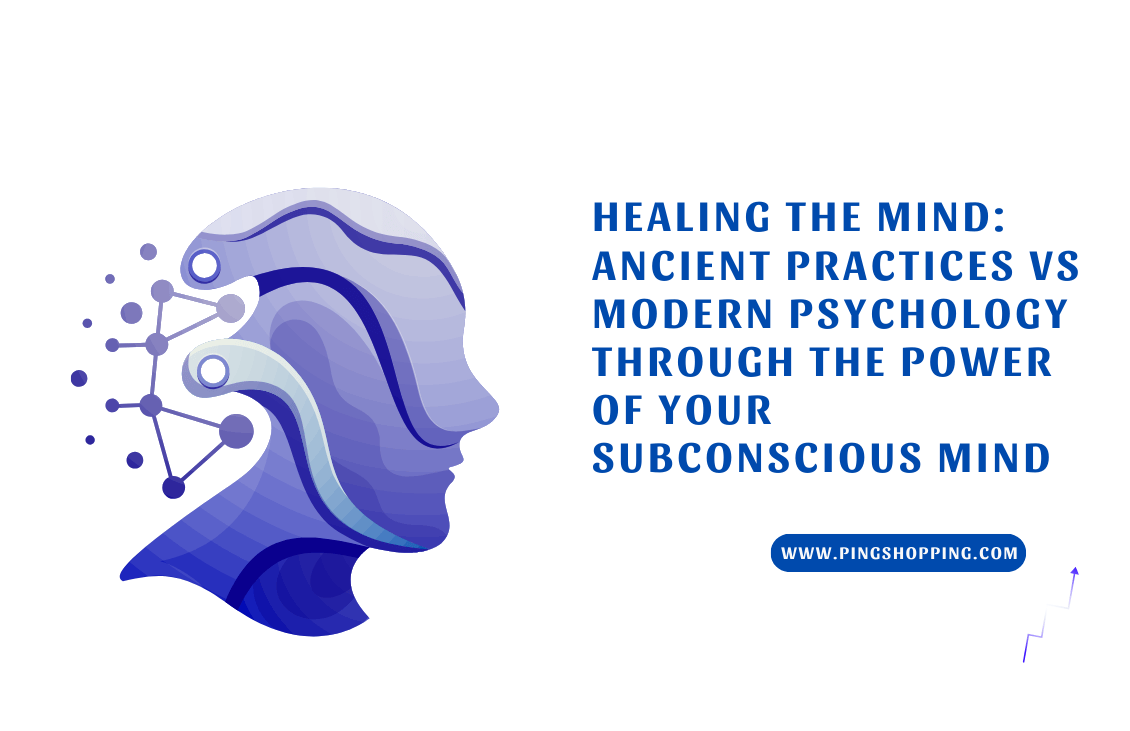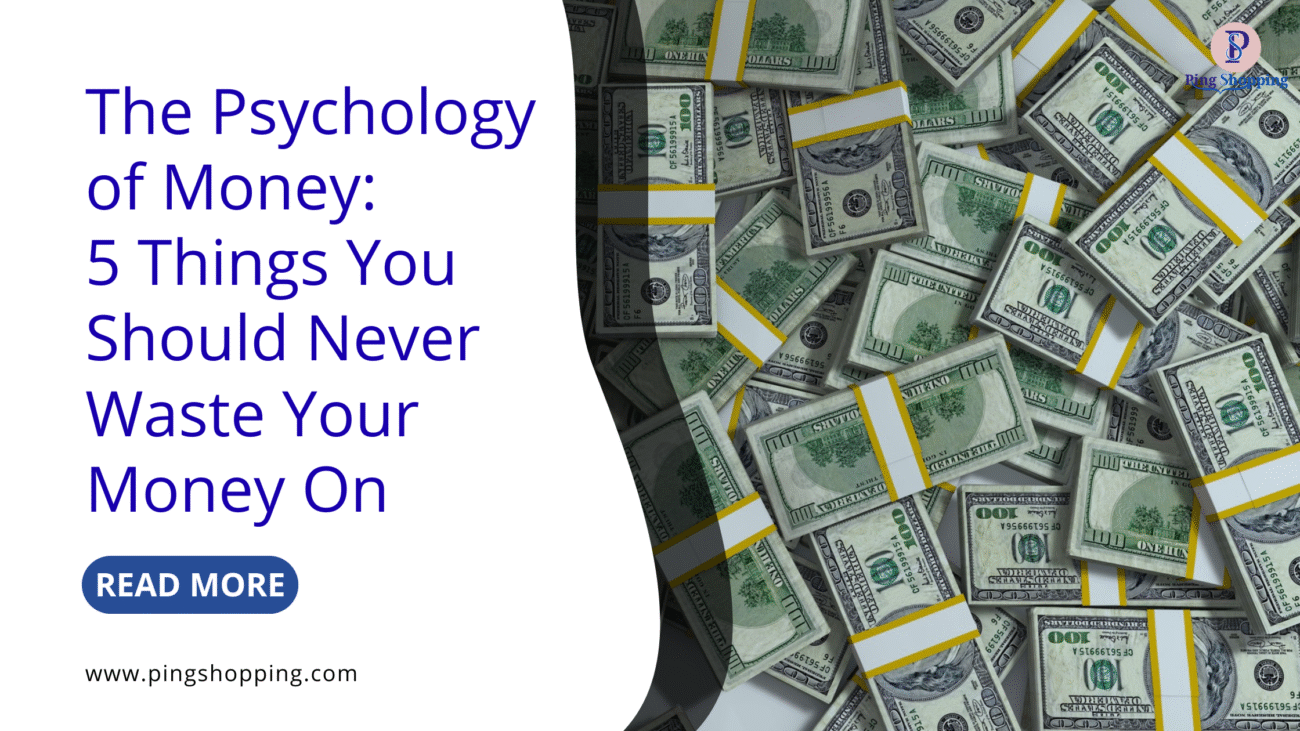Healing the Mind by the Power of Your Subconscious Mind: As Americans strive for better ways to deal with stress, worry, and emotional problems, mental healing is becoming more and more important. But curing the mind is not a new idea. Ancient civilizations utilized potent techniques grounded in faith, prayer, and rituals that accessed the mind’s significant healing capabilities. In today’s world, these age-old methods are combined with modern psychology, all of which rely on the huge and sometimes overlooked power of the subconscious mind. Joseph Murphy’s life-changing book, The Power of Your Subconscious Mind, demonstrates how this part of your mind may be actively directed toward healing and happiness, bridging the gap between the old and the new.

Ancient Methods of Mental Healing
For hundreds of years, spiritual leaders and healers from Egypt to India have known that the mind may affect the health of the body. Old-fashioned treatments emphasized prayer and visualization, believing that faith and a good outlook would start healing processes deep inside. These early methods depended on the power of suggestion to get the subconscious mind to make the changes that were wanted.
Indian traditions offer some of the most comprehensive documentation of these enduring practices. The Vedas and Upanishads, two ancient texts, talk about self-reflective techniques (Svadhyaya) that help people control their emotions. Breath control techniques, such as Pranayama, were employed to achieve mental clarity and alleviate stress, foreshadowing contemporary scientific discoveries regarding the advantages of breathwork. People thought that chanting mantras, a type of focused repeated sound, might clear the mind and lower anxiety. Modern neuroscience backs this up by showing that parts of the brain that control emotions are active during chanting sessions.
The Bhagavad Gita says that meditation (Dhyana), a stable mind (Stithaprajna), and emotional balance (Samatva) are all important for mental balance and strength. These ancient teachings emphasized non-attachment to ego (Ahamkara) and self-awareness, profound concepts that resonate with contemporary psychological insights into healthy emotional limits.
Ayurveda also used physical detoxification methods (Panchakarma), herbal medicines like Ashwagandha and Brahmi, and oil massages (Abhyanga) to help people feel better mentally. Recent scientific investigations validate the adaptogenic qualities of these herbs, demonstrating their efficacy in alleviating anxiety and improving cognitive function, thereby bridging old wisdom with contemporary science.
Other ancient cultures, including the Egyptians who used frankincense in ceremonies, the Chinese who used acupuncture and herbal medicine, and the Native Americans who used shamanic treatment, also knew that spiritual and physical health were connected. In all of these traditions, the subconscious mind was the unseen healer that was brought to life by faith, ceremony, and strong belief.
Modern Psychology and the Subconscious Mind
Today, American psychology employs numerous ideas that were formerly obscured by spiritual terminology but are now established via empirical research. The subconscious mind is still the basis for powerful healing through science-based methods like affirmations, mental imagery, and positive thinking, which are all important ideas in Joseph Murphy’s work.
Cognitive Behavioral Therapy (CBT) and other modern therapies focus on changing negative ideas to change deeply held beliefs in the subconscious. Mindfulness and meditation, which are currently common mental health tools, work by relaxing overactive brain circuits and helping people control their emotions, which is similar to the goals of ancient meditation.
Daily affirmations help heal and grow by changing limiting thoughts. Visualization exercises, in which people picture themselves as healthy and happy, activate brain pathways that are connected to real physical recovery. Practicing gratitude and forgiveness can help get rid of emotional blocks, which can help reduce the stress and anxiety that can lead to illness.
Murphy asserts that the subconscious mind is impartial and will accept and respond to any coherent thought or belief, regardless of its positive or negative nature. So, the secret to getting better and being happy is to give it affirmations and mental images based on faith and belief on purpose.

Practical Steps for Mental Healing Today
For Americans who want to combine old knowledge with modern psychology, the following practical methods provide a solid starting point for healing the mind:
- Practice Daily Affirmations: Saying things like “I am healing every day” sends a message to the subconscious to get the body and mind ready for healing.
- Visualization: Picture the life, health, and peace you want in your mind, using all of your senses to help your mind accept it.
- Gratitude and Forgiveness: Make it a habit to be thankful every day and let go of anger to free up emotional energy that slows down recovery.
- Breathwork and Meditation: To lower stress on your nervous system, try breathing exercises like deep diaphragmatic breathing or old ones like Pranayama.
- Mix Ancient and Modern Rituals: Use both spiritual activities like prayer or mantra chanting and evidence-based habits like writing and cognitive behavioral therapy (CBT) approaches.
- Herbal and Physical Care: Talk to a doctor about adaptogenic herbs like Ashwagandha or Brahmi, as well as physical therapy like massage or acupuncture.
These techniques use the huge power of the subconscious mind to help people become mentally clearer, emotionally stronger, and healthier as a whole.
Why the Subconscious Mind Matters for Americans
The US has a fast-paced and often stressful way of life that has caused more mental health problems, such as anxiety, depression, and chronic stress disorders. Traditional medicine and treatment don’t always work; therefore, people are turning to holistic methods that focus on self-healing.
Unlocking the subconscious mind gives you strong, long-lasting answers. Murphy’s teachings reveal that faith, affirmation, and visualization can affect the way you think and feel about yourself and the world around you. This method works well in American society, where natural healing, mindfulness, and self-help are all becoming more popular as ways to improve mental health.
Individuals gain control over their welfare by learning to rely on their own mental resources instead of only following external prescriptions. This gives them more independence and authority.
Final Thoughts: The Power of Your Subconscious Mind
The history of mental health shows that the power to heal is always inside of us. People used to use prayers, rituals, and meditations to access the healing powers of the subconscious mind. Modern psychology corroborates and expands these discoveries through systematic, empirically proven methodologies.
Joseph Murphy’s The Power of Your Subconscious Mind teaches readers how to harness this potential intentionally through trust, repetition, and visualization. In merging traditional knowledge with modern psychology, Americans today can discover a holistic mental wellness path that honors tradition while embracing scientific advancement.
Align your conscious thoughts and subconscious beliefs now, and you’ll be able to tap into your mind’s amazing ability to heal, change, and grow.





